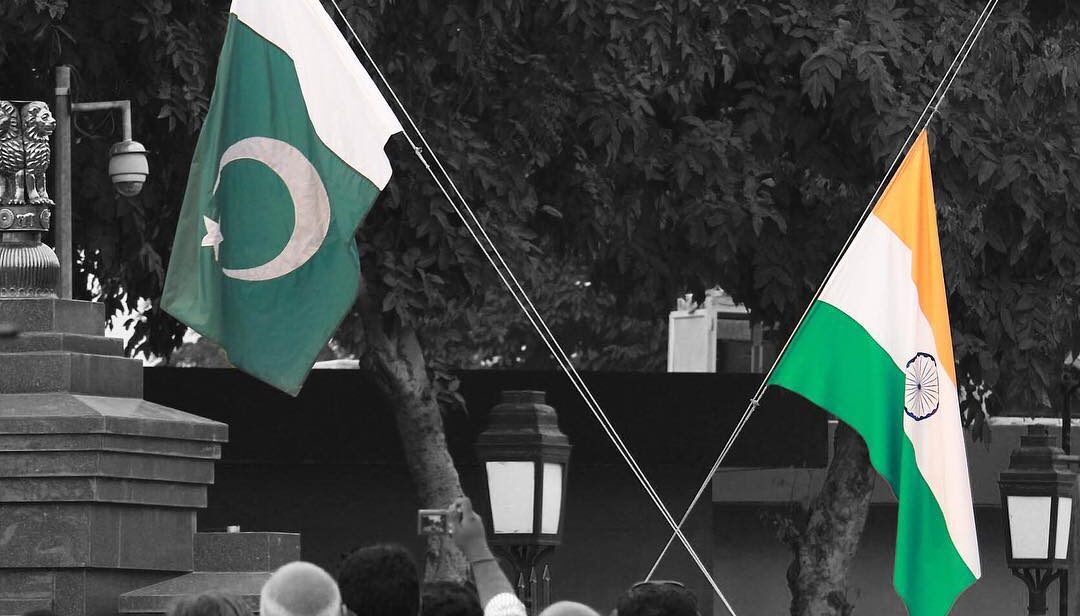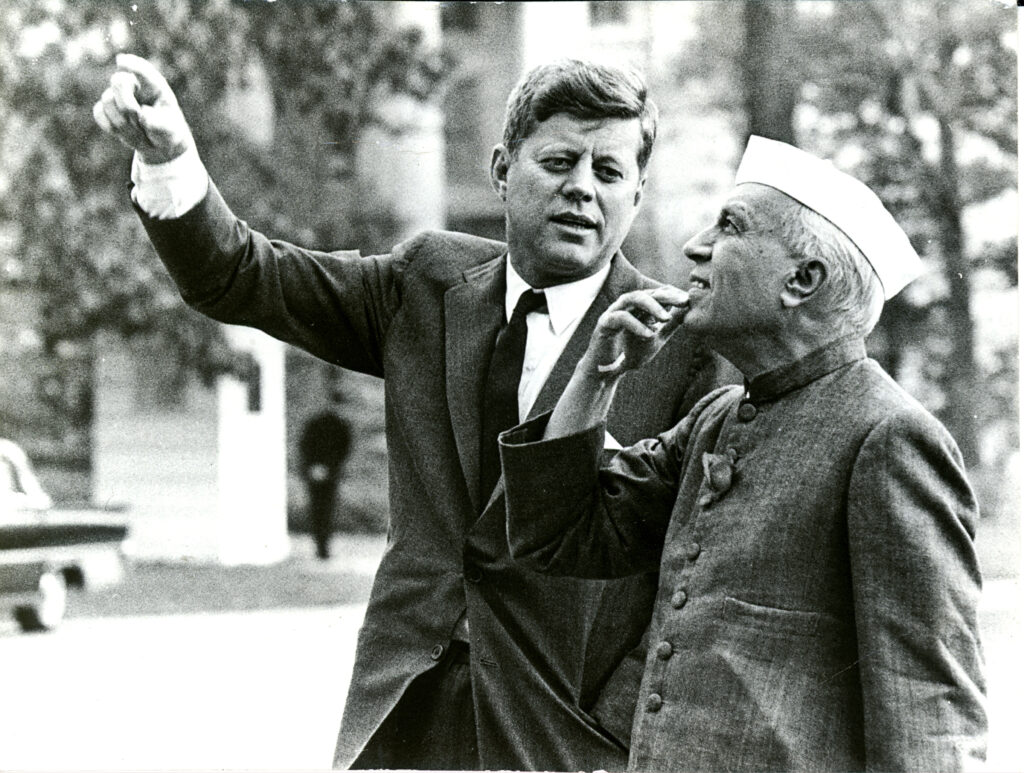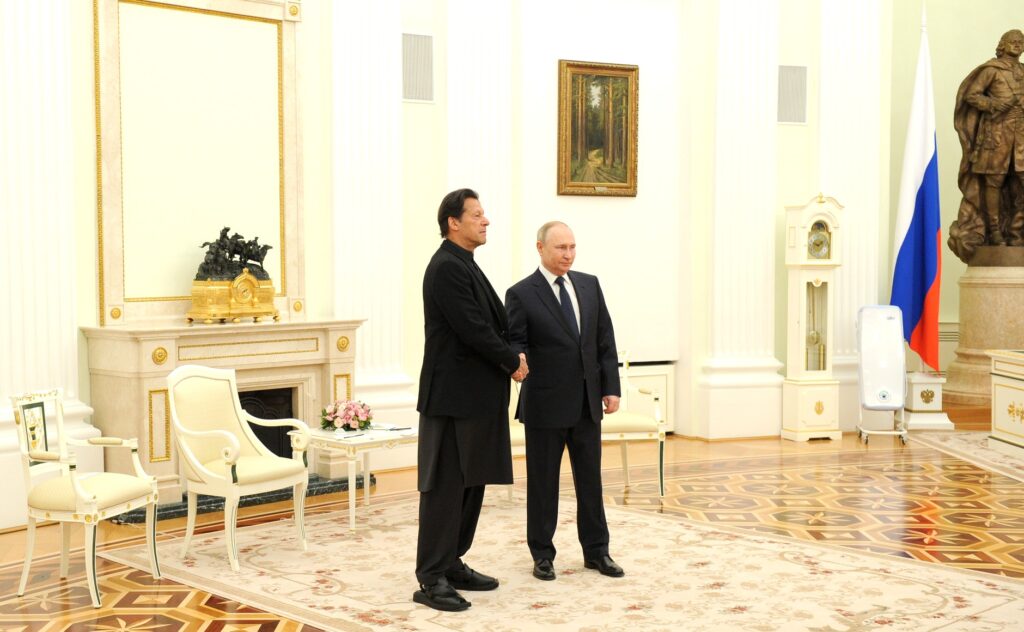
Global division following Russia’s war in Ukraine has rekindled the public debate on ‘strategic autonomy’ in South Asia. According to S. Kalyanaraman, “strategic autonomy denotes the ability of a state to pursue its national interests and adopt its preferred foreign policy without being constrained in any manner by other states.” This concept has gained greater salience as both India and Pakistan have attempted to define their viewpoints amidst their longstanding rivalry and relationships with other global powers. While analysts have viewed India and Pakistan from all possible lenses, the subject of ‘strategic autonomy’ has remained one of the least analyzed and understood factors. Furthermore, few have attempted to compare how New Delhi and Islamabad perceive the idea of strategic autonomy and practice it.
India’s pursuit of strategic autonomy is connected to its deep-rooted skepticism towards dependency on or domination by a single foreign power. For Pakistan, the quest for strategic autonomy mainly forms a response to its security threat perceptions vis-a-vis India. The rise of China and the ongoing war in Ukraine provide contemporary examples to assess how India and Pakistan practice strategic autonomy.
Strategic Autonomy in Post-Independence World: The Cold War Era
India’s colonial experience made it wary of becoming a victim of great power rivalry, leading to its adoption of a non-aligned foreign policy during the first decades after independence. Under Prime Minister Jawaharlal Nehru, New Delhi thwarted any attempts by the United States to convince India to join the Western-led military alliances aimed at containing the USSR. In addition to the fear of losing decisional autonomy, India did not see the USSR as a direct security threat. Nehru sought to prioritize developmental needs at home instead of diverting resources towards the commitment to a military alliance. Non-alignment helped India secure its strategic interests and not compromise its decisional autonomy to any superpowers and led to a perpetual desire to pursue an independent foreign policy and retain decisional autonomy on strategic affairs.
While analysts have viewed India and Pakistan from all possible lenses, the subject of ‘strategic autonomy’ has remained one of the least analyzed and understood factors.
One can identify two broad trends in India’s practice of ‘strategic autonomy’ during the Cold War: aversion to partnering with the superpowers, followed by increasing flexibility to tilt towards the USSR. Initially, New Delhi remained strictly non-aligned on security issues. The 1962 India-China War was an inflection point and India under PM Indira Gandhi was more flexible in partnering – not aligning – with the superpowers to secure its interests. The Sino-Soviet split of the late 1960s offered New Delhi the space to move closer to the Soviet Union as leadership in both countries closely evaluated the China factor.
While the signing of the Indo-Soviet Treaty of Peace, Friendship and Cooperation in 1971 may have appeared to shift away from non-alignment, this was India’s way of practicing strategic autonomy and securing its place vis-a-vis the growing US-China-Pakistan bonhomie in early 1971. To an extent, this decision insulated India’s military maneuvers in the East from “external great power interference,” paving the way for its victory in the 1971 India-Pakistan War. Even as India partnered with the Soviet Union in several sectors, New Delhi continued to project itself as a non-aligned actor. This trend persisted until the disintegration of the Soviet Union in 1991.
Pakistan’s conception of strategic autonomy stemmed from dealing with an unstable political environment at home, conflict with India over Jammu and Kashmir, and fear of Afghanistan’s irreconcilable approach toward Pakistan. The desire to challenge India’s power and reduce its sole reliance on a single global power motivated Pakistan’s exercise of strategic autonomy.
During the Cold War, Pakistan’s enviable geo-strategic location – sandwiched between Soviet Union’s southern border and China’s western border – commanded the West’s attention. Motivated by the desire to counter India, Pakistan joined the US-led alliances of the Southeast Asia Treaty Organization (SEATO) and the Central Treaty Organization (CENTO). The practice resulted in Pakistan using a two-tier approach to exercising strategic autonomy. At the regional level, Pakistan challenged India and refused to accept it as the sole regional power. However, at the international level, Pakistan exercised limited strategic autonomy by supporting the West to gain access to American military aid and equipment to combat Indian aggression. The initial optimism for complete reliance on the United States dissipated after India was granted unprecedented military aid after the India-China War 1962, where Pakistan felt “increasingly taken for granted.” Under Nehru’s policy of “non-alignment,” India also secured “sufficient flexibility” to be wooed by the United States to contain the USSR – without much success. The embargoes placed on India and Pakistan after the 1965 war mediated Pakistan’s subsequent strategy of external and internal balancing in years to follow.
Exercising strategic autonomy at the regional level, Pakistan facilitated rapprochement between the U.S. and China in July 1971 through a secret visit. This development came alongside a prolonged political crisis in its Eastern wing, which turned into an internal insurgency – covertly supported by India – followed by a full-scale India-Pakistan War, which resulted in the dismemberment of Pakistan’s Eastern Wing. This development was a crucial trigger for Pakistan’s withdrawal from SEATO in 1973 and CENTO in 1979. Islamabad grew disillusioned with the alliances’ failures to secure its regional security interests and its inability to contain India’s military actions.
The Soviet invasion of Afghanistan in 1979 created new areas of strategic confluence between the United States and Pakistan. For the United States, Pakistan’s support was critical to thwarting the Soviet Union’s attempt toward such an expansion as Washington injected military and economic aid to contain the Soviet threat. Ultimately, Pakistan’s geography and support to U.S. operations served as crucial factors in determining the Soviet withdrawal.
Strategic Autonomy in the Post-Cold War Era
With the end of the Cold War and the fall of its most crucial partner—the USSR—India needed to reinvent its external policy outlook. India’s domestic economic challenges made it imperative for New Delhi to build diplomatic and economic ties with various countries and engage with the post-Cold War world to benefit India and its interests. Prime Minister PV Narasimha Rao embarked on what is now known as India’s multi-alignment policy, which involves engaging all major powers through strategic partnerships. While grappling with the challenges of U.S. hegemony in the 1990s and experiencing international opprobrium after the 1998 nuclear tests, it was able to forge ties with the United States and its allies in the 2000s. The policy of multi-alignment was salient under Prime Minister Atal Bihari Vajpayee and gained increasing momentum under the leadership of Prime Minister Manmohan Singh. Multi-alignment allowed India to exercise decisional autonomy in foreign policy choices while gaining from multiple partnerships simultaneously.

After the end of the Cold War, Pakistan pursued nuclear deterrence to achieve strategic deterrence against India and reduce dependency on international powers for its national security. Even with strict constraints and sanctions, external actors failed to prevent Pakistan’s pursuit of nuclear weapons, which stands out as an illustration of strategic autonomy at the regional and international levels.
Pakistan-U.S. relations offer great insights into Islamabad’s quest for strategic autonomy while maintaining a military partnership with the United States and gaining from its security and economic assistance. The periodic disconnect between Islamabad and Washington in the decade after the Cold War reversed after the 9/11 terror attacks. During the long U.S.-led war against Al-Qaeda and the Taliban, Pakistan attempted to maintain its decisional autonomy on other issues while broadly supporting American operations in Afghanistan. Pakistan continued to pursue its interests in Afghanistan vis-à-vis India and proved reluctant to completely neutralize the Haqqani faction. On other occasions, Islamabad overruled Western calls to transport troops in combat roles to Iraq during Operation Iraqi Freedom and also chose to not participate in the Yemen conflict.
Strategic Autonomy in the Present
Indian leadership has recently introduced the concept of ‘issue-based alignment’. As explained by Indian Foreign Secretary Vijay Gokhale, India’s alignment is “not ideological” but “issue-based”, which gives it “the capacity to be flexible, gives us the capacity to maintain our decisional autonomy.” New Delhi has broadened its strategic partnerships and engages a diverse set of countries through multiple multilateral institutions, forums, and groupings. At times, it has even simultaneously engaged powers at odds with each other. For instance, New Delhi is part of the Quad, with the United States, Japan, and Australia, while maintaining ties with Russia and even China through BRICS, Russia-India-China trilateral arrangement, and the Shanghai Cooperation Organization (SCO). Notably, despite divergences with countries, India continues to interact with them and even partner in areas of shared interest.
Pakistan current discourse on strategic autonomy has centered on debates over its desire to shift to a geoeconomics-focused foreign policy. One camp, exemplified by Pakistan’s former National Security Advisor, Moeed Yusuf, has asserted that Pakistan needs to move away from leveraging its geopolitical location to transform into a hub for ideas, investment, trade, business, and connectivity. The other camp has argued that Pakistan lacks the internal ingredients to achieve a smooth transition to geoeconomics. Regardless of the diverse viewpoints, contradictions are rife in Pakistan’s exercise of strategic autonomy. Pakistan’s structural economic challenges, reliance on bailouts as stop-gap arrangements from the IMF and friendly countries, and domestic woes continue to restrict the space for Pakistan to practice strategic autonomy effectively. Nevertheless, strategic autonomy is principally exercised, by country’s leadership when Pakistan’s core national security is under threat. However, with intense calls for reforms, the push towards geoeconomics to exercise greater strategic autonomy may stand as a plausible alternative for Pakistan’s strategic leadership.
South Asia’s response to two contemporary strategic developments—China’s rise and Russia’s invasion of Ukraine—offer valuable insights into India and Pakistan’s practice of strategic autonomy and deserve attention.
The Rise of China
China’s military rise, increasing assertiveness, and protracted dispute along the Line of Actual Control introduced a new facet to India’s multi-alignment policy. Even as India maintains productive ties with many countries, it has edged closer to the United States and its allies. This has sparked an ongoing domestic debate in India about whether New Delhi is losing its strategic autonomy in moving closer to the United States or if U.S. support allows India to pursue its international and regional interests while retaining strategic autonomy against China. Concurrently, there is a debate in the West about whether India can actually align closely with their expectations.
South Asia’s response to two contemporary strategic developments—China’s rise and Russia’s invasion of Ukraine—offer valuable insights into India and Pakistan’s practice of strategic autonomy and deserve attention.
As U.S.-Pakistan relations have waned, Islamabad has continued to strengthen ties with China and harness its location for geo-economical purposes. This has included engagement with China under its Belt and Road Flagship project, the China Pakistan Economic Corridor – with extensive investments from China in connectivity, power generation, and economic zones. In efforts to maintain its strategic autonomy vis-a-vis India – primarily to challenge India’s regional hegemony – Pakistan has perpetually deepened its defense cooperation with China, evident with joint development and acquisition of weapon systems such as fighter aircraft, air defense platforms, and acquisition of Main Battle Tanks. Developments in the economic and the military domain suggest Pakistan plans to offer equal priority to economic areas as much as its security concerns – especially on its own terms – despite the inherent challenges. Yet, the policy of no-camp politics propels Pakistan to diversify its external balancing sources without overly relying on either China or the United States. A desire to avoid a single camp in case of confrontation is another driver of this policy. A concern, which finds resonance among ASEAN countries also – in Southeast Asia.
Russia’s War in Ukraine
India’s practice of simultaneously engaging the U.S. and Russia has introduced a diplomatic challenge following the Russian invasion of Ukraine. New Delhi has adopted a nuanced take on the ongoing war and abstained from UN votes against Russia until August 24, 2022. The challenges of concurrently engaging the two sides have been evident in recent months. However, some of the successes from the Indian viewpoint include its ability to get weapon systems from Russia and the U.S. simultaneously and even buy Russian crude oil amid the crisis. New Delhi also hopes for a CAATSA waiver to continue procuring the S-400 missile system from Russia. Expectedly, it has been at the receiving end of some Western actors but has continued its issue-based alignment. The perception of the Chinese threat greatly shapes India’s relations with Russia and the United States. New Delhi seeks American capacity-building support, and even diplomatic support vis-a-vis Chinese aggression when it deems fit. At the same time, it is wary of isolating Russia to a point where it is pushed closer to China. Considering Russia’s growing inability to remain a reliable arms supplier to India, New Delhi is likely to ‘look west’ for defense technology partnerships and support for its defense indigenization pursuit. The ultimate Indian aim is to forge a favorable situation without compromising its decisional independence. So far, India has seemingly managed to balance the dichotomies while carving a space for itself to practice its strategic autonomy. However, as the ongoing developments shape the new world order, the complex mix of challenges and opportunities may pose new dilemmas and predicaments for the Indian leadership.

Pakistan finds itself in a tough spot over the war in Ukraine: abstaining from voting in the UN on Russian aggression in Ukraine and President Zelensky’s speech at the UNGA. The war has complicated Pakistan’s balancing act between Russia, Europe, and the United States and spilled over into domestic politics. However, the main challenge for Pakistan over Ukraine is securing its own dependence on military equipment from Russia while ensuring the protection of business exports to the European Union under GSP Plus status, preventing secondary sanctions, and the next anticipated tranche from the International Monetary Fund. During the Shanghai Cooperation Organization summit on September 15, 2022, Prime Minister Shehbaz Sharif and President Vladimir Putin agreed to continue the Pakistan Stream gas pipeline project and enhance cooperation in trade, food security, and defense and security cooperation. The agreement reflected the current Pakistani government’s efforts to diversify its external balancing sources to exercise strategic autonomy. More broadly, it reflects the recurrent debate in Pakistan on possible pathways for strategic autonomy.
Conclusion
India and Pakistan have different understandings of strategic autonomy, making their practices of the concept unique. How a country exercises strategic autonomy is closely linked to its foreign policy objectives, security interests, and security threat perceptions.
India’s quest for strategic autonomy comes from its inherent skepticism and fear of domination by a foreign power. Even as India partners with major powers to serve its geopolitical and foreign policy objectives or cater to its security interests, it remains wary of losing decisional autonomy. The increasing need to balance the two aspects has proven challenging at times but has, nevertheless, formed a near-constant theme in Indian external conduct over the last fifty years.
In contrast, Pakistan’s conception and practice of strategic autonomy are driven mainly by its security threat perceptions, primarily from India and other potential security threats. It has exercised strategic autonomy on issues that do not pose an immediate threat to national security and expanded its diplomatic leverage by joining multilateral forums. On the other hand, several internal challenges have constrained its space for exercising strategic autonomy. With dispassionate reforms at home and a shift towards geo-economics, the space for strategic autonomy can potentially expand and, therefore, may not remain a pipedream.
***
Click here to read this article in Urdu.
Image 1: Umair Khan via Flickr
Image 2: U.S. Embassy New Delhi via Flickr
Image 3: Presidential Executive Office of Russia via Wikimedia Commons


